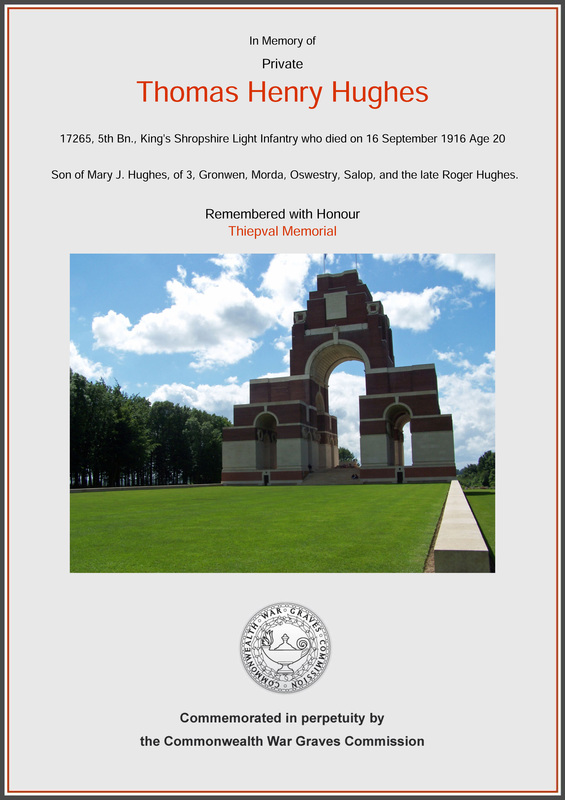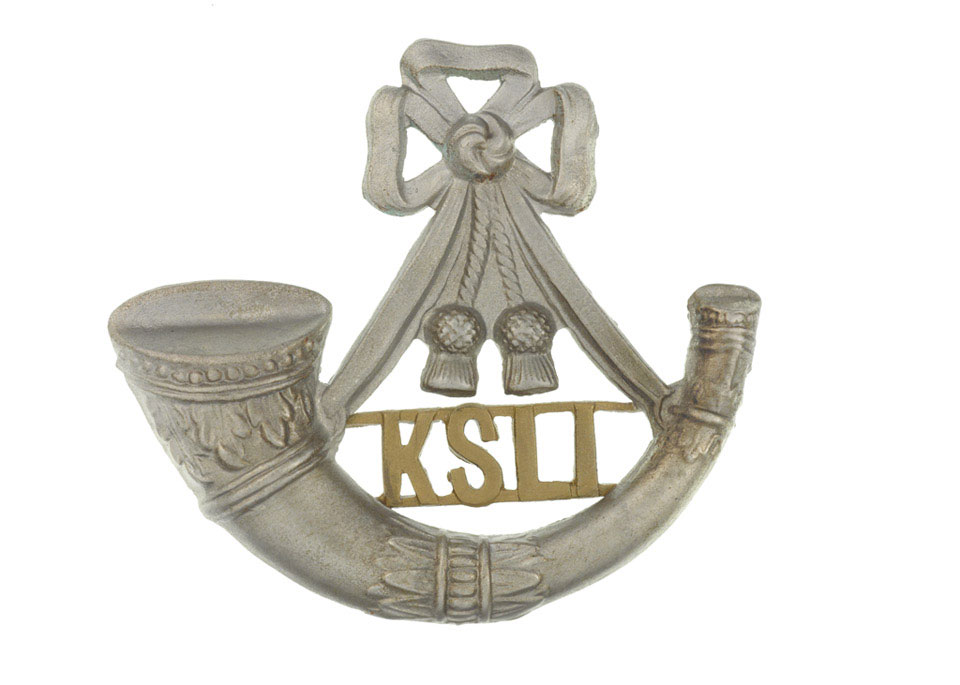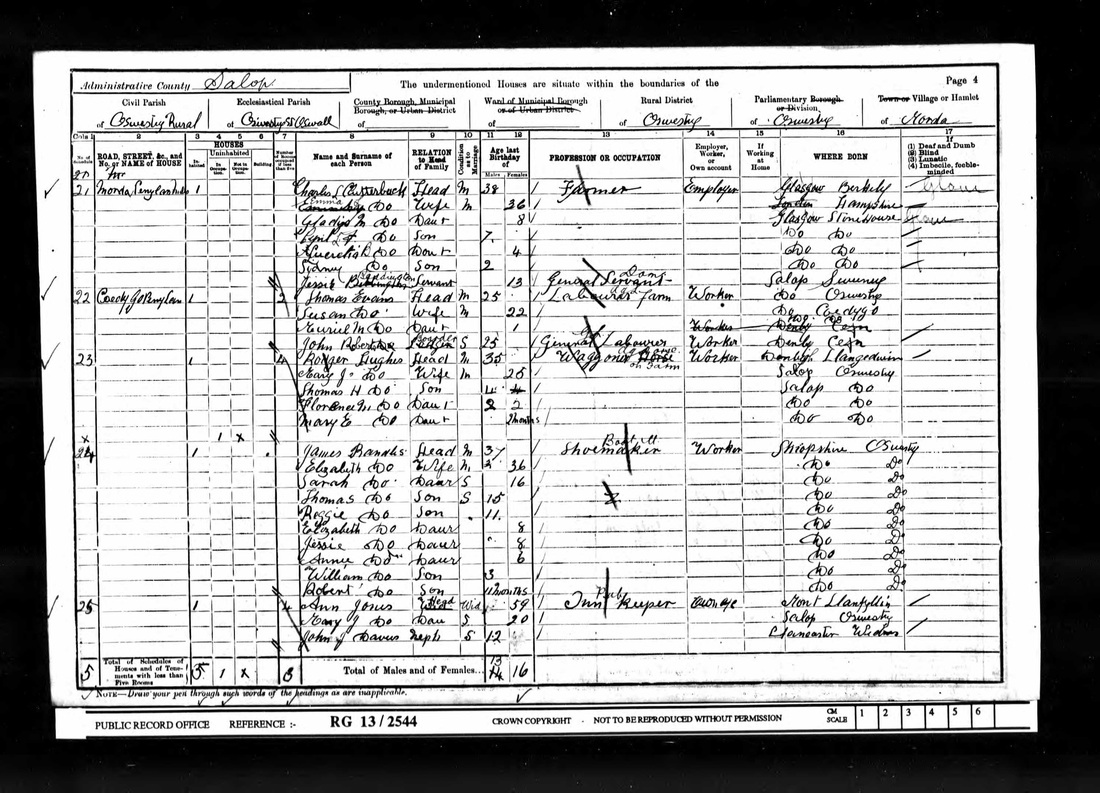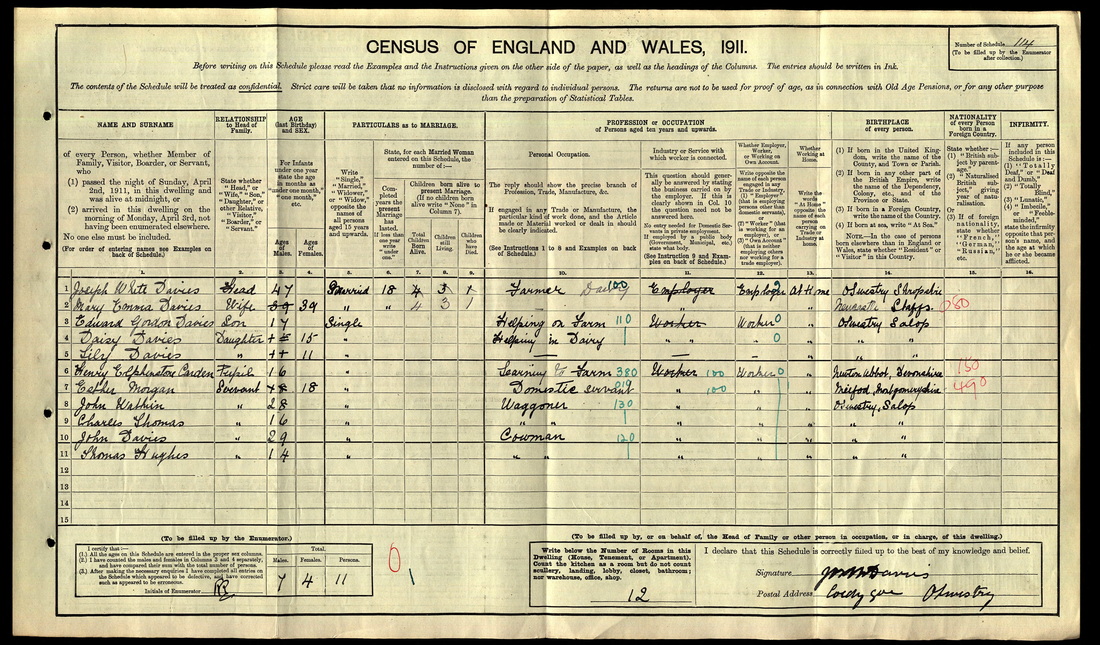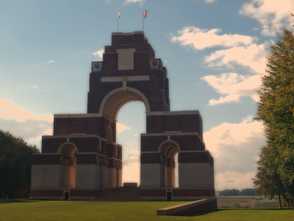Thomas Henry Hughes
|
Introduction
Thomas Henry Hughes was born in Coed-y-Go in 1896 to Roger and Mary Hughes. Roger was born in Llangedwyn and by the 1891 census at the age of twenty four was living and working as a waggoner on Coed-y-Go farm. In the 1901 census he was still employed as a waggoner but he had married his wife Mary and they had three children including Thomas Henry aged just four and were living in a cottage in Coed-Y-Go. In the 1911 census Thomas Henry aged just 14 appears living at Coed-Y-Go farm himself as a servant and working as a Cowhand. |
Thomas Henry Hughes (20) died on the 16th September 1916 and it is likely that he died from wounds recieved the day before, when the Battallion had been in heavy fighting with their War Diary reading
The weather was dry but cold in the evenings. Their objective was to take over a trench held by the Germans called Gird Trench which they failed to do. There seems to have been an inquiry as to why this had not happened and letters from the time suggest that various officers were under investigation for not fully following orders. However during the action it says that four German field guns and one machine gun had been captured. these had caused particular difficulties for them earlier during the engagement
It is also interesting to note that
"A new engine of war was used for the first time, a petrol driven armoured car known as a Tank. Four of these had been alotted to the Division and were considered to have done splendid work" Casualties for the day were recorded as officers Killed 1, Orderlies killed 34, Officers wounded 11, Orderlies killed 184, and 34 missing.
The weather was dry but cold in the evenings. Their objective was to take over a trench held by the Germans called Gird Trench which they failed to do. There seems to have been an inquiry as to why this had not happened and letters from the time suggest that various officers were under investigation for not fully following orders. However during the action it says that four German field guns and one machine gun had been captured. these had caused particular difficulties for them earlier during the engagement
It is also interesting to note that
"A new engine of war was used for the first time, a petrol driven armoured car known as a Tank. Four of these had been alotted to the Division and were considered to have done splendid work" Casualties for the day were recorded as officers Killed 1, Orderlies killed 34, Officers wounded 11, Orderlies killed 184, and 34 missing.
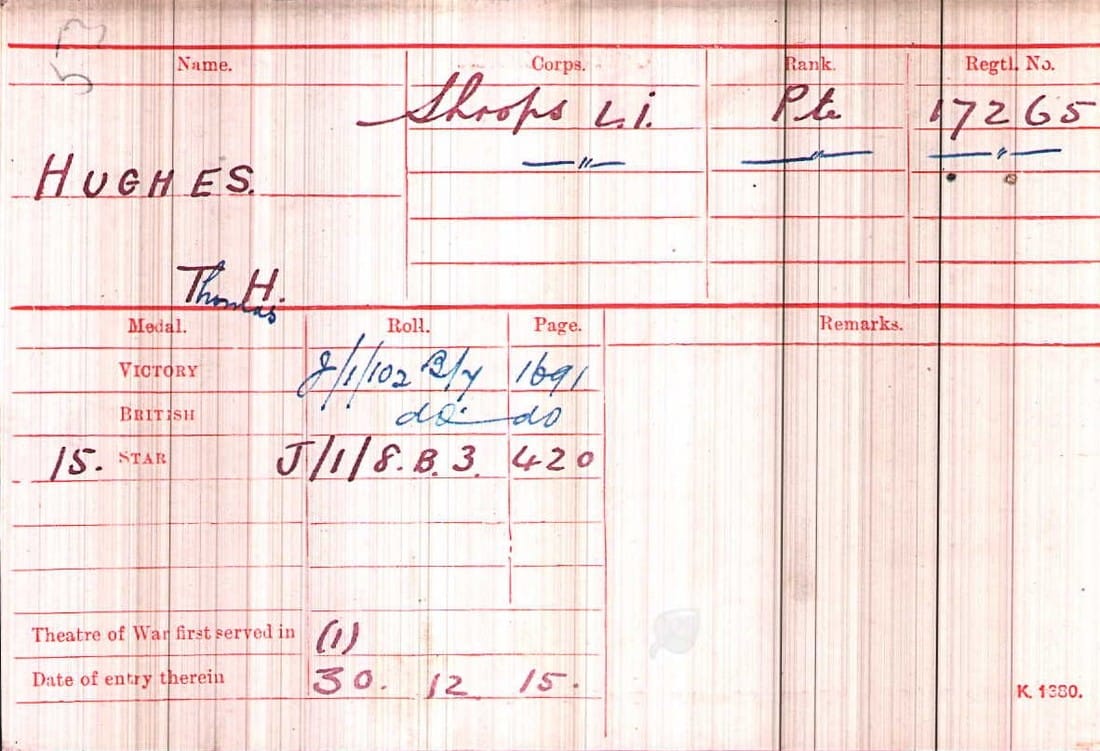 Medal Roll Index Card
Medal Roll Index Card
Battalion Information
A war-raised Service Battalion, formed in Shrewsbury in August 1914 under Lt. Col. H. M. Smith, from the mass of enthusiastic volunteers coming forward to enlist. Posted to the 42nd Brigade, 14th Division.
After training around Aldershot, it landed at Boulogne on 20th May 1915, first coming under fire at Ypres on 31st May 1915, and then served entirely on the Western Front.
It saw some of the worst fighting of the war in the Ypres Salient in 1915, around Bellewaerde and Hooge; was on the Somme in 1916, seeing particularly heavy fighting at Delville Wood and Flers-Courcelette.
After service at fought at Arras and in the attack on Vimy Ridge in 1917, returned in August to the Ypres salient to take part in the 3rd Battle of Ypres.
It was disbanded at Jussy on 4th February 1918, its personnel going to other K.S.L.I. battalions.
5th Battalion Battle Honours:
France and Flanders 1915 ; France and Flanders 1916; France and Flanders 1917 ; Ypres 1915*; Somme 1916*; DelviIIe Wood; Flers-Courcelette; Arras 1917*; Ypres 1917*. (9)
A war-raised Service Battalion, formed in Shrewsbury in August 1914 under Lt. Col. H. M. Smith, from the mass of enthusiastic volunteers coming forward to enlist. Posted to the 42nd Brigade, 14th Division.
After training around Aldershot, it landed at Boulogne on 20th May 1915, first coming under fire at Ypres on 31st May 1915, and then served entirely on the Western Front.
It saw some of the worst fighting of the war in the Ypres Salient in 1915, around Bellewaerde and Hooge; was on the Somme in 1916, seeing particularly heavy fighting at Delville Wood and Flers-Courcelette.
After service at fought at Arras and in the attack on Vimy Ridge in 1917, returned in August to the Ypres salient to take part in the 3rd Battle of Ypres.
It was disbanded at Jussy on 4th February 1918, its personnel going to other K.S.L.I. battalions.
5th Battalion Battle Honours:
France and Flanders 1915 ; France and Flanders 1916; France and Flanders 1917 ; Ypres 1915*; Somme 1916*; DelviIIe Wood; Flers-Courcelette; Arras 1917*; Ypres 1917*. (9)
Census data
Historical Information
On 1 July 1916, supported by a French attack to the south, thirteen divisions of Commonwealth forces launched an offensive on a line from north of Gommecourt to Maricourt. Despite a preliminary bombardment lasting seven days, the German defences were barely touched and the attack met unexpectedly fierce resistance. Losses were catastrophic and with only minimal advances on the southern flank, the initial attack was a failure. In the following weeks, huge resources of manpower and equipment were deployed in an attempt to exploit the modest successes of the first day. However, the German Army resisted tenaciously and repeated attacks and counter attacks meant a major battle for every village, copse and farmhouse gained. At the end of September, Thiepval was finally captured. The village had been an original objective of 1 July. Attacks north and east continued throughout October and into November in increasingly difficult weather conditions. The Battle of the Somme finally ended on 18 November with the onset of winter.
In the spring of 1917, the German forces fell back to their newly prepared defences, the Hindenburg Line, and there were no further significant engagements in the Somme sector until the Germans mounted their major offensive in March 1918.
The Thiepval Memorial, the Memorial to the Missing of the Somme, bears the names of more than 72,000 officers and men of the United Kingdom and South African forces who died in the Somme sector before 20 March 1918 and have no known grave. Over 90% of those commemorated died between July and November 1916. The memorial also serves as an Anglo-French Battle Memorial in recognition of the joint nature of the 1916 offensive and a small cemetery containing equal numbers of Commonwealth and French graves lies at the foot of the memorial.
The memorial, designed by Sir Edwin Lutyens, was built between 1928 and 1932 and unveiled by the Prince of Wales, in the presence of the President of France, on 1 August 1932 (originally scheduled for 16 May but due to the death of French President Doumer the ceremony was postponed until August).
The dead of other Commonwealth countries, who died on the Somme and have no known graves, are commemorated on national memorials elsewhere.
(Click on the link for more information)
http://www.cwgc.org/find-a-cemetery/cemetery/80800/THIEPVAL%20MEMORIAL
On 1 July 1916, supported by a French attack to the south, thirteen divisions of Commonwealth forces launched an offensive on a line from north of Gommecourt to Maricourt. Despite a preliminary bombardment lasting seven days, the German defences were barely touched and the attack met unexpectedly fierce resistance. Losses were catastrophic and with only minimal advances on the southern flank, the initial attack was a failure. In the following weeks, huge resources of manpower and equipment were deployed in an attempt to exploit the modest successes of the first day. However, the German Army resisted tenaciously and repeated attacks and counter attacks meant a major battle for every village, copse and farmhouse gained. At the end of September, Thiepval was finally captured. The village had been an original objective of 1 July. Attacks north and east continued throughout October and into November in increasingly difficult weather conditions. The Battle of the Somme finally ended on 18 November with the onset of winter.
In the spring of 1917, the German forces fell back to their newly prepared defences, the Hindenburg Line, and there were no further significant engagements in the Somme sector until the Germans mounted their major offensive in March 1918.
The Thiepval Memorial, the Memorial to the Missing of the Somme, bears the names of more than 72,000 officers and men of the United Kingdom and South African forces who died in the Somme sector before 20 March 1918 and have no known grave. Over 90% of those commemorated died between July and November 1916. The memorial also serves as an Anglo-French Battle Memorial in recognition of the joint nature of the 1916 offensive and a small cemetery containing equal numbers of Commonwealth and French graves lies at the foot of the memorial.
The memorial, designed by Sir Edwin Lutyens, was built between 1928 and 1932 and unveiled by the Prince of Wales, in the presence of the President of France, on 1 August 1932 (originally scheduled for 16 May but due to the death of French President Doumer the ceremony was postponed until August).
The dead of other Commonwealth countries, who died on the Somme and have no known graves, are commemorated on national memorials elsewhere.
(Click on the link for more information)
http://www.cwgc.org/find-a-cemetery/cemetery/80800/THIEPVAL%20MEMORIAL
